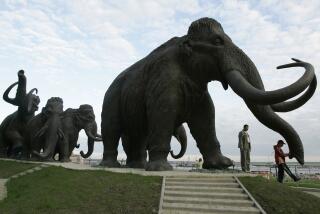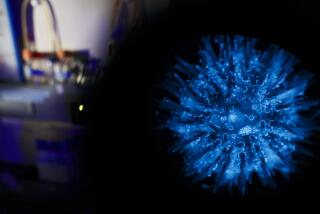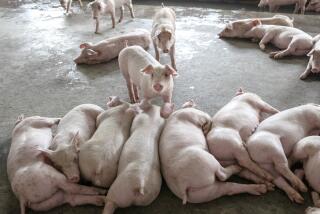A Crass Menagerie : Is the World Ready for Patented, Genetically Engineered Animals?
I am alarmed as well as fascinated by the U.S. Patent and Trademark Office’s decision to patent invented animals.
By invented animals they evidently mean new animal types, or perhaps new species, created by splicing genes.
At first glance this proposal seems innocent enough. Through genetic manipulation we can have cows that give more milk, sheep that bear more wool, dogs that don’t bark, and so on.
Producing new types through genetic manipulation is much faster than the old-fashioned method of selective breeding, which can take many generations.
But knowing human nature, we know that our biologists, once they get the green light, are not going to stop with simply increasing a cow’s milk or making a thoroughbred horse run faster.
Man is an experimental creature and will do what he can do.
For centuries we have been breeding the jackass to the mare to produce the mule. And what do we have? An animal that is strong but stubborn beyond human endurance; and which, alas, is incapable of breeding with its own kind. The mule is a dead end.
Some zoos, I believe, have produced ligers by breeding lions and tigers. This is an exotic animal that captures our fancy, but if I’m not mistaken ligers cannot breed successfully either.
I’m sure, however, that science will find a way around this roadblock, and that our new invented creatures will soon be breeding away like rabbits. We will have to declare open season on them so hunters can keep them under control, like mountain lions.
I suppose that in granting patents for invented animals the Patent Office merely has its eye on the development of salable products, all of which will contribute to the national economy.
What if, for example, we were able to produce a cow that gave light beer instead of milk? That would probably revitalize the dairy industry and bring back good times to all the farm states.
We who watch the beer ads during football games on television would soon be regaled by commercials showing buxom, pink-cheeked “beermaids” squeezing pails full of foamy beer from contented cows.
Who knows but what some genius in the laboratory will actually come up with an umbus, “a sort of cow” invented by Dr. Seuss. If you remember, the umbus has one head and one tail, like any ordinary cow, but . . . .
She has 98 faucets that give milk quite nicely / Perhaps 99 / I forget just precisely.
I suppose that would still be a cow, though an amazing one indeed.
But inevitably, some kinky biologist will want to go a little further and create a new species. An individual animal wouldn’t have to be very much different from an existing species to be declared a new one by the taxonomists, who make up their own rules.
I wonder how the Patent Office will rule on such animals, if they should ever appear. What if some scientist, tinkering with the genes of the camel, turns out a spazzim?
The spazzim, as every reader of Dr. Seuss knows, is a kind of cross between a yak and a camel, except that it has an arabesque set of antlers that travelers may use for hanging up such articles as their umbrellas, clocks, coffee cups, and grasshopper cages.
A beast who belongs to the Nazzim of Bazzim / Handy for traveling / That’s why he has ‘im. / More easy to pack than a suitcase or grip / Those horns carry all that he needs on a trip.
I doubt that the spazzim will ever replace the automobile, but it ought to be a welcome innovation in the lands of the nomads, if there are any left.
Would our unknown biologist get a patent for the spazzim, since he gave it life? Or would the patent belong to Dr. Seuss, who thought up the spazzim and brought him into being first, if only on paper?
I see all kinds of litigation arising from the awarding of patents for new species. DR. SEUSS SUES TO PROTECT FUDDLE FROM PATENT INFRINGEMENT . . . BIOLOGIST CLAIMS HE CREATED THE YUZZ . . . . And so on.
But there are moral as well as practical uncertainties in this development.
Isn’t it man’s ultimate arrogance to encroach on God’s exclusive right to create species?
Actually, God has done an astounding job. There are a million species of animal life on earth, each one different from the others, and in their variety they are even more improbable than the inventions of Dr. Seuss.
Has Dr. Seuss invented anything more wonderful than the kangaroo and the wallaby, who carry their children in a pouch; the trapdoor spider, who builds a door to lure victims into his parlor; Micromalthus debilis , a tiny male fly that, after five days of life, devours its mother; the bat, the hippopotamus, the praying mantis, the penguin, the giraffe, the monarch butterfly?
The Patent Office is not yet prepared to issue patents on human alterations. But sooner or later, the biologists will begin trying to remake us. In 20,000 years of selective breeding we have not been able to eliminate the baboon in our nature. Why not try?
Meanwhile, I wish they’d take some smaller steps and just give us quiet dogs and monogamous cats.






